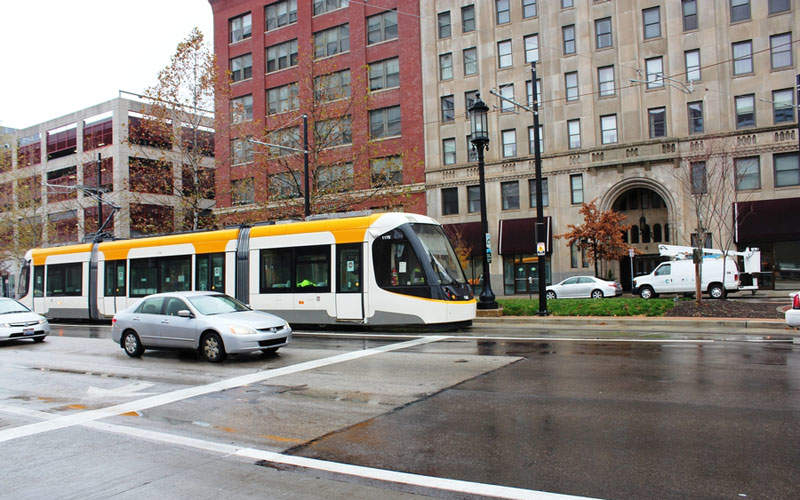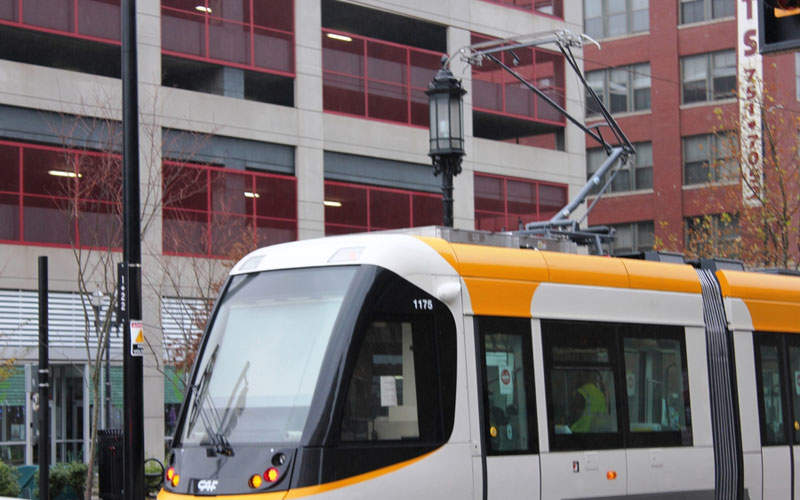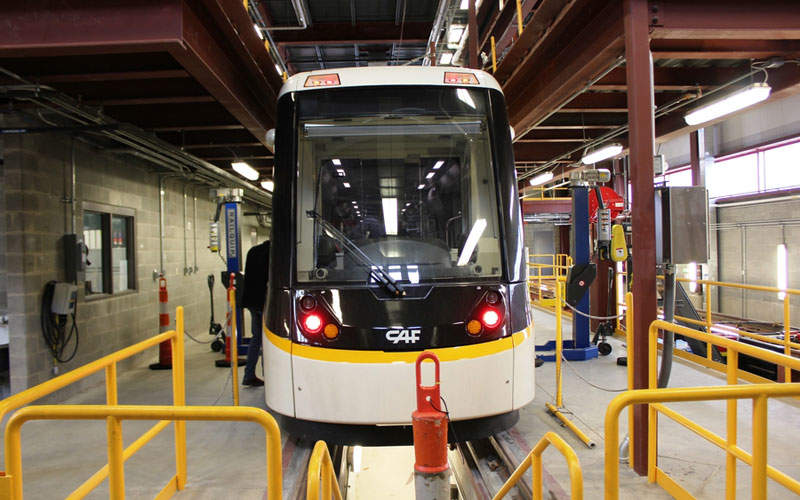Cincinnati Bell Connector (formerly Cincinnati Streetcar) is a new electric streetcar rail transit system introduced in Cincinnati, Ohio, US.
The project involved the construction of a 3.6-mile (5.8km) line connecting key communities in downtown Cincinnati with an investment of $147.81m, which is sourced through federal and city funds.
The new streetcar system offers cost-effective transport while complementing the city’s Metro and other transportation systems. It also stimulates the declining businesses in the area and boosts the city’s tax revenue by attracting new investments.
The first live-power vehicle test on a 1.6-mile stretch was successfully conducted in November 2015. The streetcar system began passenger service in September 2016.
The streetcar system was transformed to Cincinnati Bell Connector under a naming rights agreement signed with Cincinnati Bell a month before the line’s opening.
Cincinnati Bell Connector project development
The development of the Cincinnati Bell Connector began with the feasibility study in 2007. The project was approved by the Cincinnati City Council in April 2008 but faced opposition from special interest groups arguing that the length of the route was too short and costly.
The anti-rail referendums conducted in 2009 and 2011 to stop the project were, however, rejected by voters, the majority of which preferred the project. This allowed the project to move forward. Construction of the streetcar system began with the ground-breaking ceremony in February 2012.
The project also involved the construction of a maintenance and operations facility at the end of Henry and Race streets. The facility acts as an operational base for offering maintenance and repair services.
Cincinnati Bell Connector route details
The streetcar system runs on a loop between Second Street at The Banks on the riverfront and Henry Street, which is located north of Findlay Market in Over the Rhine.
The route includes 18 stops, connecting popular destinations such as Government Square, Fountain Square, Contemporary Arts Center, Public Library, Aronoff Center, Horseshoe Casino, Gateway Quarter, School for the Creative and Performing Arts, Music Hall and Washington Park.
The streetcar line includes a single set of at-grade tracks on the shared travel ways in mixed traffic. The track was laid in the centre of the traffic lane and requires no exclusive right-of-way. The streetcar runs on the second lane next to the curb lane.
Details of the streetcar stations
The streetcar system employs a two-block spacing layout for stations, based on a downtown street grid spacing of 475ft. Each station shelter incorporates a clean, simple and modular design.
Some of the stations include bump-outs, ensuring the streetcar vehicle to operate in the second lane of traffic and upholding on-street parking where possible.
Bump-outs provide a way for riders to board and alight without requiring the streetcar to change lanes. The curb heights at bump-outs are raised to 10in in front of each station.
Each station includes a route map, information about the streetcar system and an electronic sign displaying the arrival time of the next car, as well as important messages for riders.
Rolling stock
The Cincinnati Bell Connector operates CAF Urbos streetcars incorporating a 100% low-floor design. Each vehicle includes a bidirectional unit on each side and a bogie in the centre. With a length of 23.62m, each vehicle offers a maximum passenger capacity of 267.
The articulated streetcar vehicles attain a maximum speed of 70km/h. Each unit is equipped with HVAC systems, an audio-visual passenger information system, an event recorder, a control and monitoring system, video surveillance and a hydraulic levelling system. The vehicles receive power from pantograph connected to a single overhead wire (catenary), causing low visual impact.
Contractors involved
The City of Cincinnati signed a $71.4m contract with the Messer, Prus and Delta (MPD) joint venture for the construction of the Cincinnati Bell Connector in July 2013.
WSP USA provided the project management and design services for the streetcar, in addition to construction support services.
Construcciones y Auxiliar de Ferrocarriles (CAF) subsidiary CAF USA, was preferred by City of Cincinnati for supplying five modern streetcar vehicles, in 2012. The vehicles comply with the Federal Buy America provisions and are assembled at CAF USA’s facility in Elmira, New York. The first streetcar was delivered in October 2015.
Transdev is responsible for maintenance and operations of the vehicles, in addition to track infrastructure for the streetcar system.
Cincinnati-based DNK Architects were awarded a contract to deliver Buy America-compliant shelters for the system.












